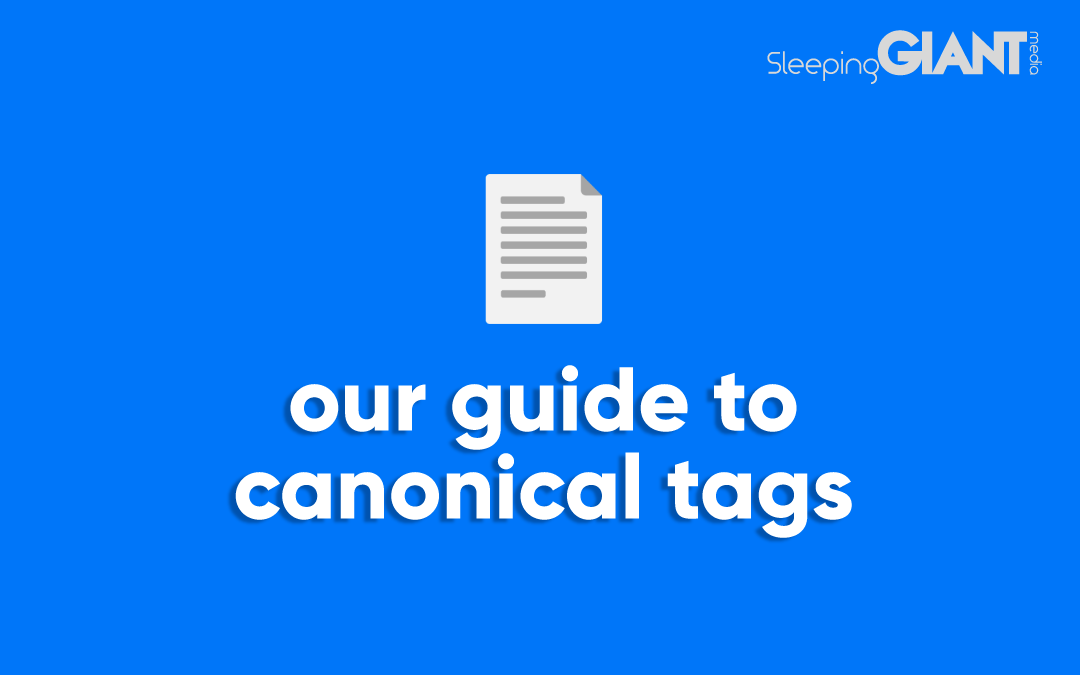5 Things You Need To Know About Bounce Rate
5 Things You Need To Know About Bounce Rate

Digital Marketing, technology & business insights, how to’s and explainer videos, released on a Wednesday. Make sure to subscribe to be notified and sign up to our mailing list! 🎥
See below, the transcript from this episode of Giant Wednesday if videos aren’t your preferred method to consume digital skills. See also the Giant Cheat Sheet from this episode.
If you want to know more, get in touch today 😎
What is bounce rate? 🤔
How can I lower my bounce rate? 🤔
What do I need to know about bounce rate? 🤔
Well… let’s start it off light;
Why did the marketer get off the trampoline? He was worried about his bounce rate! Ba dum tss…
Terrible jokes aside, hey, I’m Sam and I’m here today to explain bounce rate, why it’s important, how to lower it and how context is king.
So, let’s kick this off with the first question:
What is bounce rate?
Well, according to Google…
“A bounce is a single-page session on your site”
This ‘bounce’ is calculated, specifically, as a session that triggers only a single request to the analytics server your site sits on – for example, someone opens up your latest blog on your site, gives it a read and then pops (or bounces) off.
The ‘bounce rate’ is calculated by the total number of single-page sessions divided by all sessions.
So with that explained, I want to share five things with you about your bounce rate!
Where Do I Find Bounce Rate?
In Google Analytics you can find your bounce rate by going to Audience Overview and then clicking the metric ‘Bounce Rate’. That’ll give you a view of your overall bounce rate for your whole site.
If you want to look at the percentage for specific pages, you’d instead head to the All Pages report to filter by individual pages.
You can also look at your bounce rate by location, by source, by landing page, and a whole other host of factors.
This brings me onto our next point – without considering the context, bounce rate is just a number and not an insight.
Context Is Vital With Bounce Rate
Bounce rates could vary by country and area, for example. If your company only serves the UK, views from Germany may bounce when they realise you don’t operate in their area. In this case, your bounce rate could look high, but the reason why is clear.
We can also expect that new visitors are likely to have a higher bounce rate as they might just be in the research phase, or visiting your site for a particular reason like a blog.
Returning visitors, on the other hand, are usually there because they’re interested in your content or offering and therefore are likely to have a lower bounce rate.
A high bounce rate does not always indicate a real problem either. In some cases, it simply shows that you’ve answered the user’s query – they got what they wanted and continued on with their day.
They might now at least be aware of your brand and come to you for info again.
And, if you’ve got remarketing set up, then you can even encourage that kind of action.
To flip it and reverse it though, a shockingly low bounce rate is not necessarily a cause for celebration.
If your bounce rate is below 20%, it’s likely that your analytics are broken.
It would be unwise to assume that a bounce rate above 50%, for example, is a complete catastrophe. In fact, 41 to 55% is roughly average.
However, it does mean that the visitor hasn’t taken any further action, which is obviously not what you want. They haven’t gone to another page on your site or completed a transaction. So what could be the reason why people aren’t sticking around?
What Can Influence Bounce Rate?
Well, that’s a big question! And the honest answer is that there could be a whole host of reasons.
But some such reasons could be:
- Your webpage has a slow load time
- There’s no call to action to keep them going through
- Poor formatting
- Misleading titles
- Your website isn’t optimised for mobile
- 404 pages
- Your forms aren’t working
So essentially if your website is broken, or not considered, it’s unlikely to play in your favour.
Why Is Bounce Rate Important?
Well, in terms of rankings, you should know that your bounce rate is not actually a ranking factor for Google.
That means that when they crawl your site, they aren’t finding your high bounce rate and moving you straight to page 30.
But, and this is a big but (giggle)- we know that Google does use some engagement signals for SEO. We just don’t know what they are – they’re quite elusive there.
What we do know, as we’ve discovered, is what our bounce rate is.
And we can use this, with context in mind, as one of the signals that can indicate levels of engagement to us.
The goal shouldn’t really be to lower your bounce rate. It should instead be to make sure your visitors are satisfied with what you present to them – that you answer their query, that it’s relevant, and that the page is optimised for user experience.
So take a look at your higher bounce rate pages and make some observations.
Optimising for these things will in turn lower your bounce rate.
How Can I Lower My Bounce Rate?
Other than the methods I’ve already mentioned, there are a few other ways to try to lower your bounce rate.
As we talked about, answering the visitor’s query is great – but bouncing is not so great… unless you’re Tigger, who we can’t show on the screen for copyright reasons.
If you want to get them to stick around, you might like to try offering a short snippet of info on the page that does give them a quick answer… but then, look! You also have a fantastic, in-depth guide on the exact thing they were looking for.
If, for example, your site had regular blog, news, or content updates, you can integrate a ‘similar articles’ widget that makes them want to click over to some of your other, awesome content.
You can even just make a conscious effort to add valuable, relevant links throughout your content to take users off on an adventure of relevancy and delight relating to their query.
Finally, make sure your CTAs count. Remove the ‘buy now’, ‘add to cart’ generic-ness and add some of your brand’s personality into these buttons – let the user know what they’re getting, and make it their decision to click.
So, when you take context into account and prioritise user engagement and satisfaction over mere numbers, you’ll start to see your bounce rate lowering in turn.
Sign Up For Giant Wednesday In Your Inbox
Use the form below to sign up and we'll send you fortnightly update emails when a new episode of Giant Wednesday is launched.
Want results like these?
So, you’ve seen how we do it — and you know what we’re capable of. If your brand or business could benefit from results like these, get in touch with us today to unleash your potential.
Follow Us
Sign Up For More
Stay up to date with the latest happenings, learnings, events & more with our GIANT Newsletters.
Contact Us
Top Floor, The Civic Centre, Castle Hill Avenue, Folkestone CT20 2QY.
Copyright © 2022 Sleeping Giant Media. All Rights Reserved.


